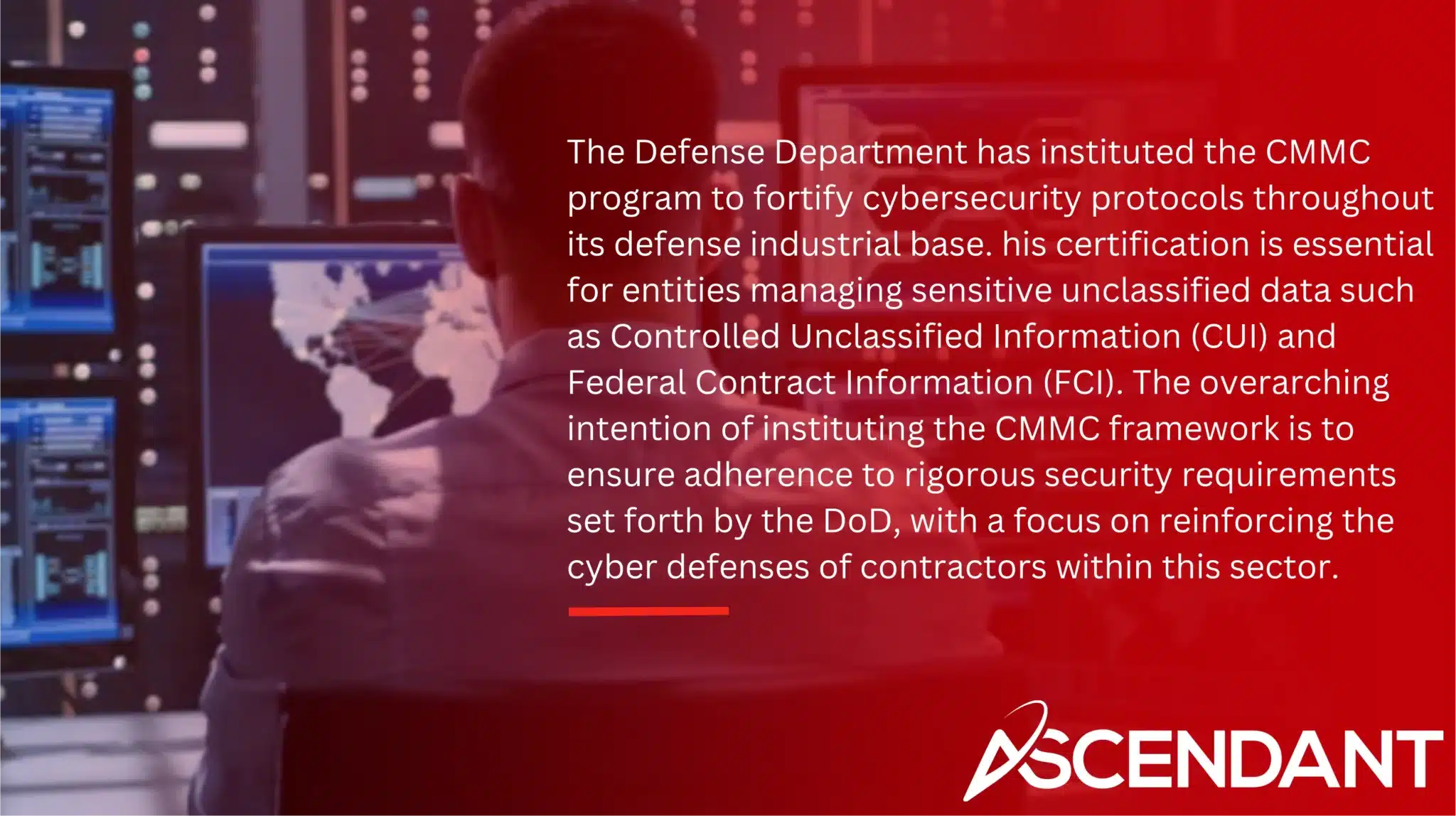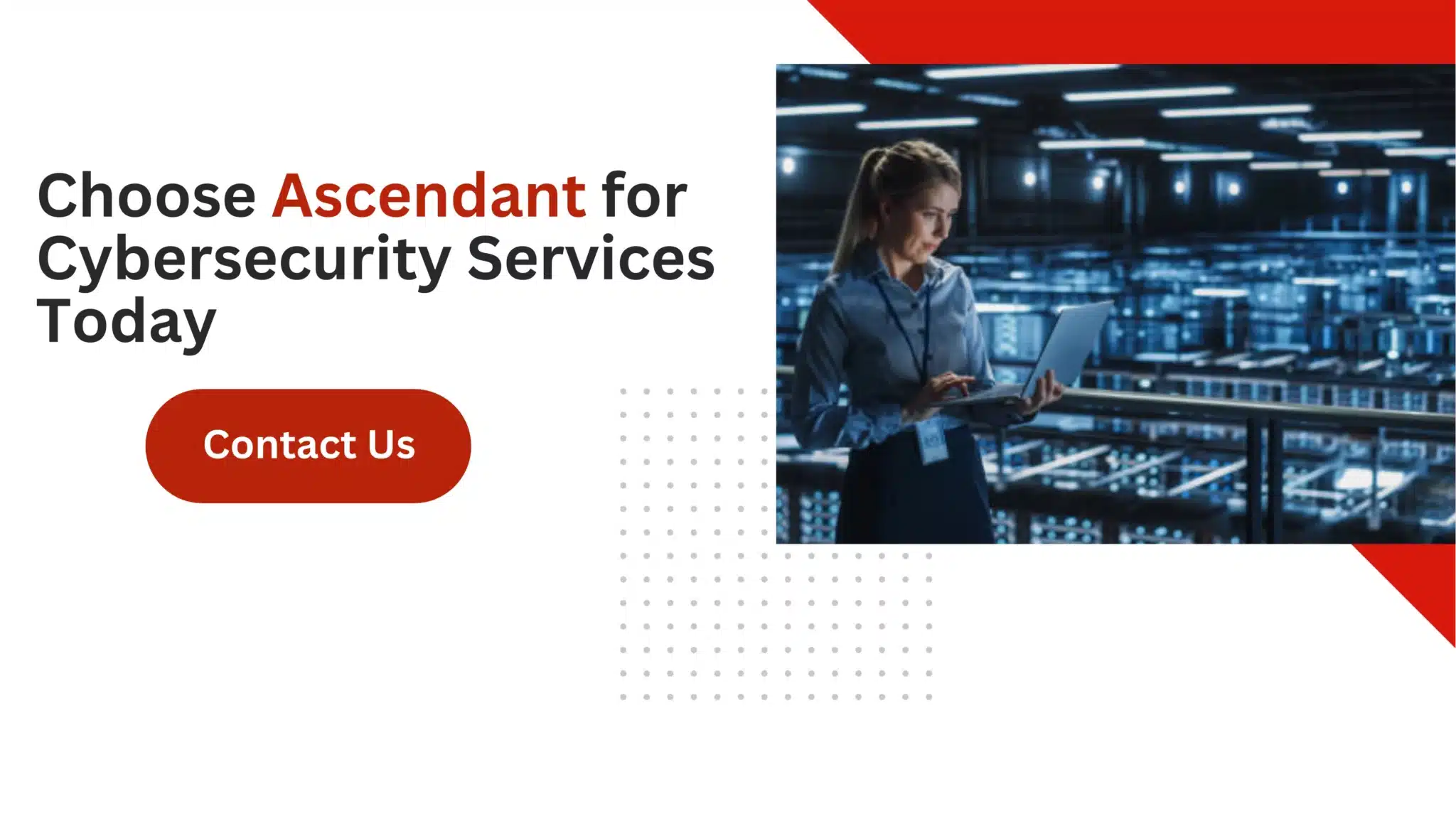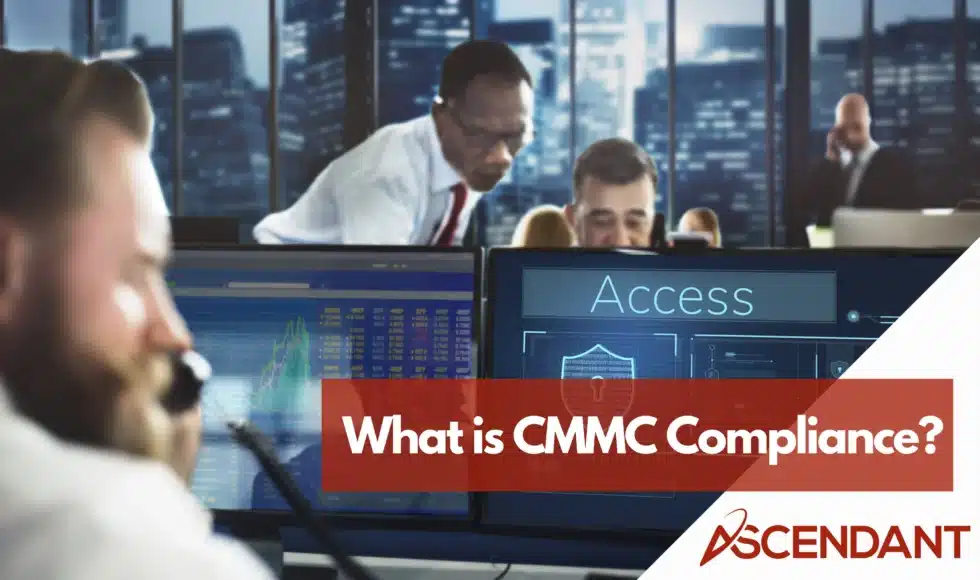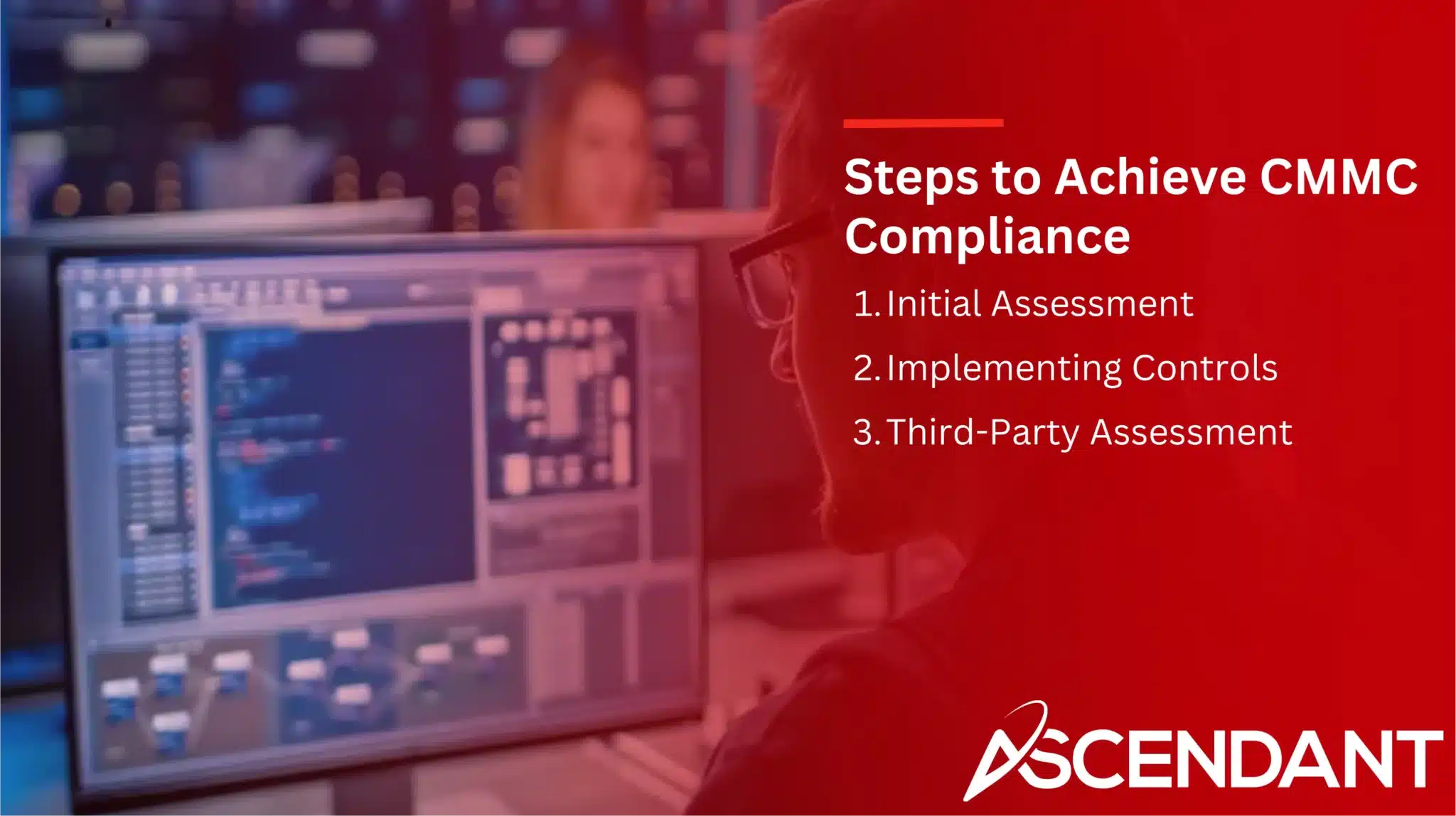CMMC, or Cybersecurity Maturity Model Certification, is a framework by the Department of Defense aimed at securing sensitive information like Federal Contract Information (FCI) and Controlled Unclassified Information (CUI). If your business wants to work with the DoD, understanding and complying with CMMC is essential. This guide will cover what CMMC entails, its importance, and the steps for achieving compliance.
Key Takeaways
- CMMC compliance is a necessary framework for organizations handling Federal Contract Information (FCI) and Controlled Unclassified Information (CUI), ensuring protection against cybersecurity threats and eligibility for DoD contracts.
- The CMMC framework consists of three levels—Foundational, Advanced, and Expert—each requiring specific cybersecurity measures that scale based on the sensitivity of the information handled.
- Achieving CMMC compliance involves a series of structured steps, including an initial assessment, implementing necessary controls, and undergoing a third-party assessment, with non-compliance posing significant risks to businesses.
Understanding CMMC Compliance

The Defense Department has instituted the CMMC program to fortify cybersecurity protocols throughout its defense industrial base. This certification is essential for entities managing sensitive unclassified data such as Controlled Unclassified Information (CUI) and Federal Contract Information (FCI). The overarching intention of instituting the CMMC framework is to ensure adherence to rigorous security requirements set forth by the DoD, with a focus on reinforcing the cyber defenses of contractors within this sector.
Under this scheme, organizations are subjected to external assessments conducted by accredited third parties. These evaluations verify that companies fulfill necessary cybersecurity criteria which aim at preserving sensitive information imparted by the Department of Defense. By conforming to these standards through compliance with CMMC guidelines, firms not only protect themselves from digital threats but also qualify themselves for participation in government contract opportunities.
For any company eyeing contracts under the Department’s umbrella, securing a CMMC certificate holds paramount importance. It reflects their commitment and capability in maintaining requisite levels of cybersecurity consistent with established regulations. Aspiring contractors must prioritize strategic planning and proactive measures well ahead of time if they wish to meet these stringent conditions successfully while safeguarding against an array of ever-shifting cyber dangers.
Who Needs CMMC Certification?
Organizations in possession of Federal Contract Information (FCI) or Controlled Unclassified Information (CUI) must attain the appropriate level of CMMC certification. This is particularly crucial for companies within the defense supply chain, as they are frequent targets for cyber-attacks, especially at lower levels where security measures may be less robust. To maintain eligibility for DoD contracts and to conform with regulations, obtaining CMMC certification is a key step.
The tiered structure of the CMMC program stipulates varying degrees of compliance depending on how sensitive the managed unclassified information is. Organizations that process data considered highly confidential will typically need to meet criteria for Level 2 certification or above. Conversely, entities dealing with routine unclassified DoD information might require only Level 1 certification—or potentially no specific CMMC accreditation.
Understanding which level aligns with your contractual obligations underpins not just adherence to regulatory mandates, but also access to profitable endeavors related to national defense contracting opportunities.
Breakdown of CMMC Levels
The CMMC framework consists of three levels named Foundational, Advanced, and Expert. Each level is crafted to counteract different degrees of cybersecurity risks and obligations. This approach creates a hierarchy where the security measures intensify with each successive tier, offering strengthened defenses against progressively complex cyber threats.
Below are the details for each level including the required practices and controls that must be implemented to achieve compliance within this structured cybersecurity framework.
Level 1: Foundational
The initial stage of the CMMC framework, Level 1, is concerned with implementing fundamental cybersecurity practices to safeguard Federal Contract Information (FCI). This level comprises 17 critical criteria that create a basic threshold for security measures, including controlling access and protecting data. Compliance at this level does not require extensive documentation.
For organizations that manage federal contract information, adhering to simple security protocols provides an essential defense mechanism. By instituting these practices, companies can ensure they adhere to the minimum cybersecurity standards necessary for DoD contracts while protecting sensitive data and preserving their qualification for federal projects.
Level 2: Advanced
The second level of the CMMC framework escalates security measures to safeguard Controlled Unclassified Information (CUI). At this stage, entities must adopt 110 security protocols consistent with NIST SP 800-171 standards. Some segments within Level 2 permit organizations to self-certify. Most situations necessitate a comprehensive evaluation by authorities designated by the government to confirm strict adherence.
For compliance at Level 2, it is vital for organizations to document their processes meticulously, ensuring that advanced cyber hygiene practices are repeatable and consistently followed. This heightened level holds particular significance for those managing critical data as it requires more robust defenses against increasingly complex cybersecurity threats.
Level 3: Expert
The Expert level, known as Level 3, is tailored to safeguard against advanced persistent threats (APTs). These complex and ongoing cyberattacks are aimed at exfiltrating sensitive information or disrupting operations. Entities operating at this tier are required to implement sophisticated intrusion detection systems, perform consistent system audits, and enforce strong access controls to solidify their cybersecurity stance.
To establish both cybersecurity and cyber resilience, it’s crucial for organizations not merely to ward off potential attacks but also rebound swiftly from any security incidents that do occur. This includes regularly updating defensive measures, providing training for staff members on cybersecurity practices, and adhering strictly to the least privilege principle in order to reduce possible risks of exposure.
Entities tasked with handling exceptionally sensitive data or those subject to heightened levels of cyber threat must attain compliance with Level 3 requirements in order to ensure the protection of such critical information.
Key CMMC Requirements
Organizations must adhere to defined cybersecurity standards for CMMC compliance, which depend on the level of sensitivity associated with the unclassified information they process. The National Institute of Standards and Technology (NIST) has developed 800-171 guidelines that detail 14 categories of security requirements critical to the CMMC framework, ensuring that controlled unclassified information is adequately protected throughout the Department of Defense supply chain.
Ensuring compliance involves thorough documentation practices where organizations must demonstrate effective implementation of necessary controls and their continuous updating in response to changing cyber threats. Organizations are expected to train employees on how to recognize cybersecurity risks while enforcing robust password protocols and implementing multi-factor authentication measures. These steps confirm identities and regulate system access under the comprehensive CMMC framework designed specifically for meeting stringent contract obligations related to safeguarding sensitive data.
To comply with Level 2 within the updated cmmc 2.0 structure, companies need to integrate a suite of 110 security controls as per NIST’s recommendations detailed in standard 800-171. These advanced protections encompass encryption methodologies and strategies for efficient incident responses as part of enhanced cybersecurity best practices that protect controlled unclassified information (CUI), often necessitating an investment in new technology tailored towards meeting specific security requirements effectively.
Steps to Achieve CMMC Compliance
Securing CMMC compliance necessitates a methodical strategy, commencing with an evaluation of existing cybersecurity measures, proceeding with the establishment of required safeguards, and concluding with a review by an impartial third-party assessor.
Every phase is vital in confirming that entities fulfill the demanding criteria and are equipped to safeguard sensitive government agreements.
Initial Assessment
Embarking on the journey to CMMC compliance begins with a thorough internal evaluation of an organization’s existing cybersecurity practices. This critical review encompasses comparing current policies, procedures, and technical safeguards with recognized cybersecurity frameworks to pinpoint deficiencies. By gaining insight into their present security stance, organizations can formulate a strategic plan aimed at reinforcing their defenses and rectifying identified weaknesses.
It is crucial for organizations to allocate attention and resources towards essential security enhancements, as determined by the assessment’s results. Adopting this forward-thinking strategy positions them favorably in fulfilling the stipulations of CMMC requirements while fortifying their cyber defenses against potential threats.
Implementing Controls
Ensuring the enforcement of robust security measures is paramount in conforming to CMMC compliance. This step entails safeguarding against a multitude of cyber threats and aligns with fulfilling essential cybersecurity criteria. The procedure usually involves evaluating existing protocols, pinpointing deficiencies, and applying necessary safeguards that are consistent with NIST SP 800-171.
Following the deployment of these security controls, it’s crucial to meticulously record them and conduct ongoing assessments as well as modifications to stay abreast of evolving cyber risks. These stringent security practices are imperative for sustaining long-term adherence to regulations and maintaining operational integrity while staunchly guarding both federal contract information (FCI) and controlled unclassified information (CUI).
Third-Party Assessment
A C3PAO is instrumental in the process of CMMC compliance, tasked with assessing an organization’s cybersecurity measures to certify that they align with rigorous criteria. The employment of independent third-party assessment organizations is pivotal for preserving impartiality in compliance assessments, thereby guaranteeing adherence to top-tier cybersecurity protocols.
Engaging with these certified assessors aids entities in developing and upholding robust cyber defenses—crucial not only for acquiring DoD contracts, but also for protection against sophisticated cyber threats known as advanced persistent threats.
Cost Considerations for CMMC Compliance
The expenses associated with obtaining CMMC certification can greatly differ, with a range from $3,000 to as much as $100,000 based on the required certification level. These variations in cost are affected by several elements such as the complexity of an organization’s business structure, the number of employees involved and the duration dedicated to readiness for compliance. Larger enterprises usually incur greater costs due to their size and advanced technological needs whereas firms operating across multiple sites or those engaged in joint ventures might face augmented complexities leading to increased expenditure.
Employing established cybersecurity frameworks like ISO 27001 has shown potential in mitigating expenses tied to achieving CMMC compliance. Specialists certified in CMMC can pinpoint strategies that economize during the path towards compliance.
CMMC 2.0 was unveiled with revisions aimed at alleviating concerns over its predecessor’s complexity and expensive nature associated with attaining certification under version 1.0. A significant update allows self-evaluations at Level 1 which is particularly beneficial for small and medium businesses as it reduces overall costs related to compliance significantly.
For successful planning toward conformity, organizations must take into account these various financial aspects so they can suitably distribute resources ensuring effective budgeting through both securing and upholding their CMMC certification status.
The Evolution of CMMC: From 1.0 to 2.0
The shift from the initial Cybersecurity Maturity Model Certification (CMMC) version 1.0 to CMMC 2.0 represents a significant development in refining compliance mandates for contractors within the defense sector. By reconfiguring the original framework, CMMC 2.0 has condensed its certification levels from five tiers to just three: Level 1 (Foundational), Level 2 (Advanced), and Level 3 (Expert). This consolidation of categories aids organizations by easing the complexity of compliance while still upholding stringent cybersecurity norms.
In an effort to emphasize essential cybersecurity protocols, CMMC 2.0 has synchronized its second level with NIST SP800-171 standards, revising its structure accordingly, which simplifies adherence procedures for involved parties.
Such progression underscores the Department of Defense’s dedication towards bolstering cyber defenses throughout entities that constitute the defense industrial base. It also acknowledges concerns voiced by industry participants about high expenses and intricate requisites set forth in CMMC’s earlier blueprint.
Impact of Non-Compliance
Organizations that do not adhere to CMMC compliance may face serious repercussions. If they fail to meet the required cybersecurity standards, it could result in the cessation of current government contracts and potentially exclude them from future federal work. Contractors who neglect these regulations risk being ruled out for projects associated with defense, which could considerably diminish their business opportunities.
Organizations falling short of compliance are vulnerable to legal consequences such as penalties and fines, along with damage to their reputation—which might negatively influence forthcoming contract possibilities.
It is essential for contractors aspiring to secure and maintain DoD contracts to uphold CMMC compliance diligently. This ensures they align with vital cybersecurity criteria and safeguard sensitive information effectively—key factors in upholding national security interests through robust cyber practices within the defense industry.
Benefits Beyond Compliance
Obtaining CMMC certification is not just about adhering to regulatory standards. By adopting measures that secure Controlled Unclassified Information (CUI), companies can strengthen their defense against cyber threats, thereby enhancing their cybersecurity framework. This preventative stance is essential for pinpointing and addressing security gaps before they lead to expensive data breaches or tarnish the company’s reputation.
Aligning with CMMC compliance bolsters confidence among stakeholders including customers, vendors, and government agencies by demonstrating a firm’s dedication to securing unclassified information. Possessing this accreditation sets businesses apart in the marketplace by underscoring their commitment to robust cybersecurity practices — an attribute appealing to prospective clients and collaborators. Such recognition often cultivates fresh business prospects and facilitates sustained achievement in the industry.
Summary
Securing CMMC certification is an essential endeavor for any entity looking to collaborate with the Department of Defense (DoD). This initiative, which includes various levels and rigorous criteria, equips businesses with the capabilities needed to safeguard sensitive data while gaining access to valuable DoD contracts. By familiarizing themselves with each level of CMMC, applying required safeguards, and submitting to evaluations by independent parties, companies can bolster their cybersecurity measures while adhering to compliance standards.
While navigating through the process towards achieving cmmc compliance might present some hurdles, it’s clear that its advantages significantly outweigh any exertion involved. Certification not only enables one to procure contracts, but also cultivates trustworthiness, enhances cyber defense mechanisms, and provides a distinct advantage within the competitive landscape. Accept this challenge head-on and take decisive action in attaining—and preserving—your organization’s CMMC certification.
 Frequently Asked Questions
Frequently Asked Questions
What is the purpose of CMMC compliance?
CMMC compliance aims to boost cybersecurity protocols across the defense industrial base by mandating that organizations adhere to rigorous security measures when handling sensitive unclassified information.
Who needs to be CMMC certified?
Entities that deal with Controlled Unclassified Information (CUI) or Federal Contract Information (FCI) and aspire to enter into contracts with the Department of Defense must secure CMMC certification.
What are the different levels of CMMC certification?
The CMMC certification has three levels: Level 1 (Foundational), Level 2 (Advanced), and Level 3 (Expert), each escalating in cybersecurity requirements.
It is essential to understand these levels to attain the appropriate certification for your organization’s needs.
How do I start the process of achieving CMMC compliance?
To achieve CMMC compliance, start by conducting an internal assessment of your current cybersecurity practices and implement the necessary controls.
Following this, you should arrange for a third-party assessment by a Certified Third-Party Assessment Organization (C3PAO).
What are the potential costs associated with CMMC compliance?
CMMC compliance costs can range from $3,000 to $100,000, influenced by the required certification level and the complexity of your business.
It is essential to assess these factors to ensure adequate budgeting for compliance.


